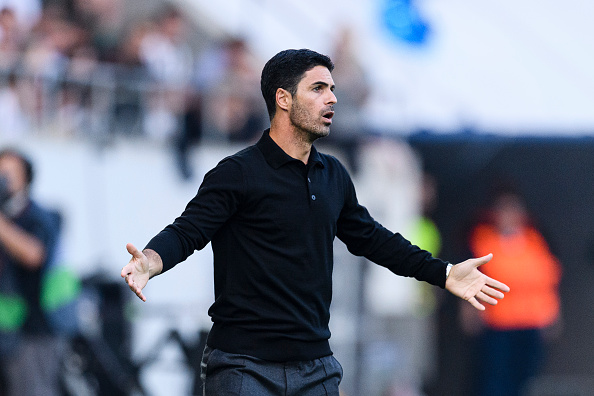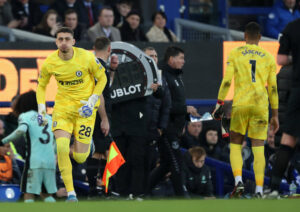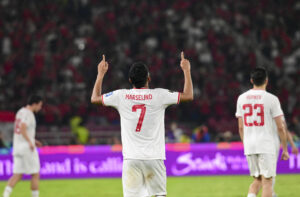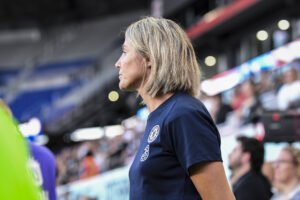The cancellation of all British football matches this weekend after the Queen’s death will afford teams and their managers a rare chance in this crowded World Cup season to reflect on their progress so far and on the challenges that remain. For Arsenal and Mikel Arteta, there will be an opportunity, in particular, to reflect on their biggest remaining weaknesses, both of which were exposed in the 3-1 defeat to Manchester United last weekend: for the team, the continuing absence of a solid central midfield partnership; and for the manager, his habit of making inexplicable, even perhaps indefensible, decisions that undermine his side rather than helping it.
Arsenal’s Remaining Weaknesses Under Mikel Arteta
A Soft Centre in Midfield
Arteta and Edu (Arsenal’s technical director) deserve praise for the reinforcements that they have made to the Gunners’ team and squad over the last year and last three transfer windows. Indeed, they have strengthened in almost every area of the pitch.
In goal, Aaron Ramsdale is an upgrade on Bernd Leno, notwithstanding his increasing tendency to dally on the ball and thus risk being dispossessed by opposition forwards; in defence, William Saliba is the latest addition to an increasingly impressive roster of centre-backs; and in attack, Gabriel Jesus has already shown enough to suggest he can be Arsenal’s best striker since Thierry Henry.
It is only in midfield, especially central midfield, that not enough has been done to improve the Gunners. In what is now his seventh season at the club, Granit Xhaka still flatters to deceive, showing nothing like the sustained form that he has demonstrated for his national side, Switzerland. Equally, Thomas Partey can now officially be declared injury-prone after two injury-ravaged years at the Emirates.
And the replacement or back-up central midfielders have done little to suggest they can seriously challenge Xhaka and Partey for their places. Albert Sambi Lokonga still looks lightweight rather than the heavyweight central midfielder the Gunners need and it baffles many Arsenal fans that Mohamed Elneny is still at the club, having joined at the same time (summer 2016) as Xhaka.
Arsenal’s inability to build the kind of central midfield that was the basis of the club’s greatest recent teams – from Paul Davis, Michael Thomas and Kevin Richardson under George Graham to the legendary pairings of the Wenger era, namely Petit-Vieira and Vieira-Gilberto Silva – is even more surprising given that both Arteta and Edu were central midfielders themselves, if not quite in the class of Wenger’s best central midfielders.
Such is the power, or at least the suggestiveness, of nominative determinism that Arsenal fans’ hopes were briefly raised this summer when the club signed another Vieira. However, those hopes soon dimmed when it became apparent that Fabio Vieira is more of a back-up for Martin Ødegaard as a number ten than the long-sought replacement for his famous namesake in central midfield.
The essential softness of Arsenal’s central midfield was exposed again at Old Trafford, where all three Manchester United goals were not only scored on the break but after United had gone right through the centre of the team. It is impossible to imagine a prime Richardson, Vieira or Petit allowing any Manchester United player to escape from them as easily as Sambi Lokonga and Xhaka let Manchester United’s central midfielders (Scott McTominay and Christian Eriksen, who is not really a central midfielder at all but a number ten) to escape from them.
Increasingly, it looks like Arsenal missed a very big trick in not pushing to sign Youri Tielemans from Leicester City. It is true that recently Tielemans has not matched the majestic performances of his first few seasons at Leicester. Nevertheless, he is a first-choice Belgian international, has only a year on his contract left (which would obviously limit any transfer fee) and it is surely undeniable that he is better, more consistent and less injury-prone than any of Arsenal’s current central midfielders.
Mikel Arteta Still Has a Tendency to Panic
At Old Trafford, what compounded Arsenal’s enduring problem in central midfield was the fact that Mikel Arteta also exposed his own biggest weakness, namely a tendency to panic in high-pressure situations and make bad – indeed, often wretched – decisions that fatally weaken his side.
Arsenal had played well at Old Trafford, certainly better than at any time in recent memory, but as the match entered its final quarter they were 2-1 down after Manchester United had scored two breakaway goals. Nevertheless, given their dominance of possession, it was still reasonable to think that, with so much time still left in the game, they could have got themselves at least an equaliser, if not a winner.
However, that became virtually impossible as soon as Arteta decided, almost immediately after Manchester United’s second goal, to make the triple substitution that completely destroyed the balance of the team, and United scored the decisive third goal soon afterwards. Unfortunately, this was just the latest in a fairly long line of bizarre decisions by Arteta that hurt his own team more than the opposition. The prime examples remain his decisions to field effectively a one-man midfield in the second leg of the 2021 Europa League semi-final against Villareal and against Manchester City at the start of last season, by playing either Ødegaard or Emile Smith Rowe, both of whom are attacking midfielders, in the middle of the park.
This tendency to panic or, to put it more charitably, over-manage by needlessly making tactical changes or substitutions, is surely the worst thing that Arteta learned as a number two to Pep Guardiola at Manchester City. Guardiola recently admitted that he has a habit of making crazy decisions, the worst of which was his entirely illogical decision to field a six-man midfield against Chelsea in the 2021 Champions League final, not one of whom was a specialist defensive midfielder.
Ultimately, that cost City the game, but usually, they have so many fine players, especially in midfield, that they can overcome any over-managing by Guardiola. Arteta has nothing like the same depth or quality of players in central midfield, and so his Arsenal team are much more likely to be disrupted, if not completely derailed, by any erratic decision that he makes.
Can These Weaknesses Be Fixed?
Given the unique demands of this season, most managers, including Arteta, will probably be pleased to have this enforced breather, even if it means a rearranged fixture later in the season. Nevertheless, until the transfer window reopens in January, it will be impossible for Arteta to bring in more (and better) midfielders. Consequently, he will have to make do until then with his “Un-Fab Four” of Xhaka, Partey, Lokonga and Elneny.
However, what Arteta can do immediately is, in the immortal words of Harry Enfield’s Scousers, “Calm down”, so that he does make dreadful decisions. He is still a relatively inexperienced manager, certainly in comparison with his direct rivals for a Champions League place, such as Guardiola, Jurgen Klopp, Antonio Conte and now Graham Potter at Chelsea. Perhaps he should have more faith in his team and indeed in himself, after the progress they have both made in the last year. Then he might be able to heed the eternal truth of another immortal comedy phrase, namely that of Lance Corporal Jones in Dad’s Army: “Don’t panic!”
Main Photo






